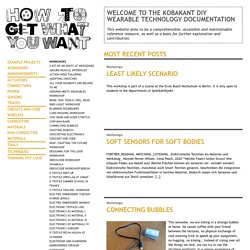

2012 February « Open Source Textiles. Knitting socks by hand takes a long time.

It seems to take me all winter to do a pair and have it complete just in time for it to languish in my drawer over summer. During both world wars, ladies in our area apparently got together in groups to knit socks for the soldiers, and apparently after some practice were knitting a sock per day. Socks also wear out faster than some other items of clothing. Choosing the right yarn can really help there. Most of the socks I’ve hand knitted to date have been using regular wool from the local craft store, really intended for knitting wooly jumpers and so forth. Sock production is of interest to us at Atamai Village, and so I’ve been researching small scale mechanized sock production.
Jacquie has spent a lifetime collecting vintage mechanical textile equipment, particularly sock knitting machines. Dodgy business practices aside, the machines are wonderful. There are also three options for a modern hand-cranked sock machine. HOW TO GET WHAT YOU WANT. Welcome to the KOBAKANT DIY Wearable Technology Documentation Workshops least likely scenario This workshop is part of a course at the Ernst Busch Hochschule in Berlin.

It is only open to students in the departments of Spiel&&Objekt. Workshops soft sensors for soft bodies FURTHER_READING_WATCHING_LISTENING_ Elektronische Textilien als Material und Werkzeug_ Hannah Perner-Wilson, Irene Posch, 2020 “Welche Fasern leiten Strom? Workshops connecting bubbles This semester, we are sitting in a strange bubble at home. Sensors 6 really wearable sensors The textile sensors on our website are often not designed to be manipulated with your hands. Workshops soft interactive technologies This workshop is a part of a course at the Art Academy Weissensee Berlin. Workshops ETextile Adventures This workshop is part of a course at the Ernst Busch Hochschule in Berlin. Smart Textile Services.
Design Research Society conference 2014 Workshop:Embodying Embodied Design Research Umeå, Sweden, 15 June 2014.

Workshop Goals: The value of engaging the full gamut of sensory motor skills in the design and use of smart objects and systems is increasingly recognized. Yet methods for arriving at robust and reliable outcomes for their development are not fully understood, nor are they easily reported or transferred through typical conference presentations and paper submissions. Workshops and conferences typically consist of cognitive and discursive processes that ignore the communicative strengths and abilities of the body.
When embodiment is integral to design research, communication of the techniques and methods used to undertake such research should also, ideally, be embodied. Workshop Activities: This one-day workshop is an experiment in how to engage, reflect on, and report embodied design research methods and techniques. How to Submit & Selection Process: Important dates: E-Textile Workspace. The E-Textile Workspace aims to offer an informal setting for both critical discussion around&about wearables, and for hands-on work on individual projects.

It aims to open a space where practice is intertwined with knowledge sharing, feedback exchange among the invited participants – members of the wearable community in The Netherlands – and with critical reflection on the state-of-the-art in wearable technology. This page displays a collection of all the documented material that was generated during the various sessions. Explaining See-Thru-Me Meg Grant explains her See-Thru-Me project Wearables and data visualisation A report by Danielle Roberts of the meeting “Wearables and data visualisation” which took place at V2_ on 13 June 2013.
[Outside V2_] The eTextiles Summer Camp 2013, Call for eTextiles Practitioners E-Textile Waste This months's eTextile workspace started out with three presentations around the topic of recycling textiles and e-waste. Continuuminum. Freedom Of Creation. All our products and projects are produced with 3D printing technologies. First we make a CAD file in a 3D software, such as Studio Max, Maya, Solidworks or Cinema 4D. We then upload the file to a 3D printer and finally unpack the 3D printer and take the product out.
It pretty much works like you would be printing a normal Microsoft Word document out of your home 2D printer, but now you can just 3Dprint real stuff in a whole range of different materials such as plastics, metals, rubbers and ceramic materials. We believe in a future where people will have 3D printers at their homes and they can just download files for products from the internet and produce them by themselves. 1. 2. 3. Here is a link also to a making off video Here you can see the actual printing process of the famous Punchbag design by Janne Kyttanen and Jiri Evenhuis. Beta Textiles. Fiber Arts Software.